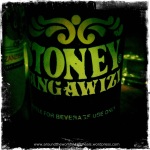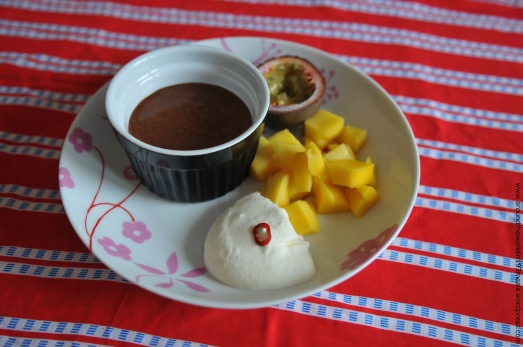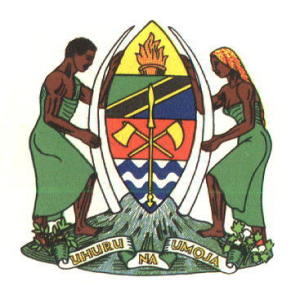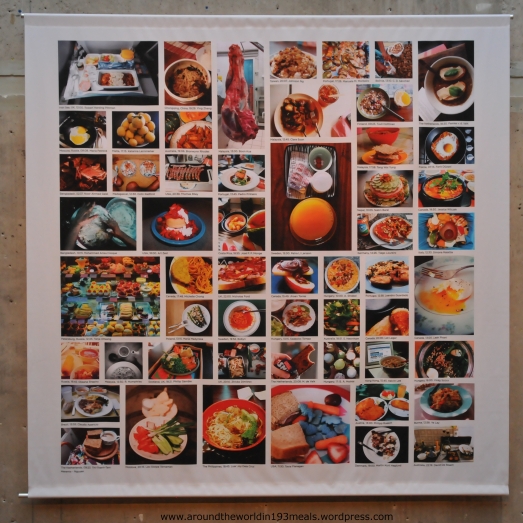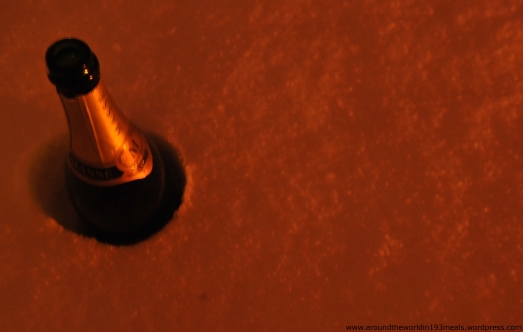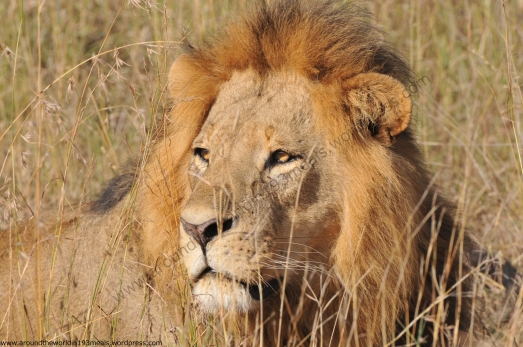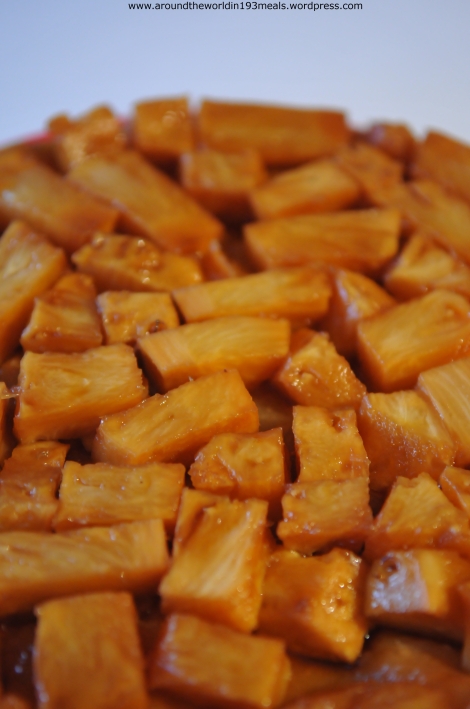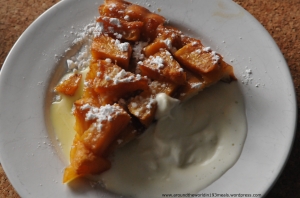9/6 – 2013
We are truly sorry for leaving you all on your own for all this time. For our return on the blog, we therefore decided to make it a bit special and not to follow our (Swedish!) alphabetical order of countries (see the list here on the right, under “the playing field”). We went for a Tanzanian dinner.
Indeed, T. is finally back from her amazing experiences in Tanzania where she’s spent almost 3 months. L. also had a chance to get a piece of it, as he joined her for a 10 days vacation on the semi-autonomous and 100% beautiful Tanzanian Island of Zanzibar. It has been very exciting and, in many ways, awarding times. We now take up the project again but with a quite natural detour since we could not see any other way than visiting Tanzania for our next post.
Our good friends Barbro and Ken, joined us on this special trip.
For this special occasion, we decided to wear some clothes from Tanzania:
Tanzania is well-known for its beautiful nature and wildlife, which T. is very privileged to be able to confirm. The scenery is stunning and the wildlife is amazing and the people are the most welcoming and amiable T. has ever met.
We could talk, or write, for hours and pages about Tanzania, but let us try to focus and address the matter of this blog, the food culture! A lot can be said about the Tanzanian food culture but here are some basics:
It is widely common to eat with your hand. But watch out lefties, it should be your right hand! This is an important rule, not only when eating but also when shaking hands, giving somebody a gift or simply handing over something to another person.
Another potential culture clasher is smelling and commenting on the smell of the food. For us, at least in Sweden, it is very common to smell food both from curiosity but also as a gesture of appreciation. In Tanzania T was told several times that it is not polite to do so, it could be perceived as a sign of distrust.
As well as in other East-African countries, the staple food is ugali (we have already touched upon it here). It is known as pap in South Africa, sadza in Zimbabwe and nshima in Zambia. Ugali, as Tanzanians and Kenyans call it, can be described as a stiff porridge but the consistency is more like a soft dough. The most common version of ugali is made from corn flour, but there are also versions made out of cassava or more common in Zanzibar out of millet, this is then called red ugali. Ugali is often served together with fish, meat or vegetables but sometimes simply together with a sauce. Many families that T met had ugali at least once a day.
Tanzanian farmers cultivate vast amounts of maize, and has relatively recently become a central staple food and commodity. You have the previously mentioned ugali, then there’s makande, which is a stew made from maize and beans that is cooked together over an open fire for a longer while.
Tanzanians also eat a lot of rice (the best rice T has ever eaten is from Magugu village in Manyara region) often served with beans and a spinach like vegetable called mchicha (called Amaranth in English) but pasta is not uncommon and there is a large representation of Indian cuisine, because of a somewhat large part of the population with Indian origin.
As an aperitif we decided to serve peanuts and the national spirit called “Konyagi”.
Konyagi is an alcoholic beverage (ca. 35 %), sold – what we understood – only in Tanzania and which resembles, at least smell-wise a bit to gin. It is very popular in Tanzania. Be careful, the Konyagi hang over is to be taken seriously!
You can drink Konyagi pure but we strongly recommend to mix it, with some of the local drinks for example, such as the delicious ginger-based soft drink Stoney Tangawizi (Actually, the Stoney Tangawizi is better of without Konyagi). The “to-go” version of Konyagi is sold in small plastic bags. Handy. You’ll find them everywhere.
For the dinner itself, we decided to make several dishes, even if they would most probably never be served with each other in Tanzania.
Our main course was a Wali na maharage, the Tanzanian version of Rice with beans (remember or Belizean post?). We went for the wali na maharage, for several reasons. First and foremost, because it is what T. has been eating in Tanzania during her entire stay. It is a VERY COMMON staple food, the typical every day meal. Secondly, it is very good. Thirdly, it can easily be done vegetarian. Fourthly, it is easy to make. Fifthly, it is cheap. Perfect combo!
Ingredients (for 4 servings)
- 3 dl rice (basmati is the closest, if you can’t find African rice)
- 400 g beans (brown preferably, we only found red and black beans, we took black, pre-cooked)
- 1 big onion, chopped
- 2 big tomatoes, peeled and chooped
- 1 broth cube (our experience is that in Tanzania, people usually use meat broth, but you can of course easily make a totally vegetarian version of this dish by using veg. broth cube)
- ca. 3 dl water
- 0,5 dl seived tomatoes (passata)
- salt & pepper to taste
Preparation
- While cooking the rice, peel and chop the onion and tomatoes.
- Sauté onion and tomatoes in some oil (sunflower or peanut would do best).
- Add water, broth, passata and the beans.
- Let simmer for 15 minutes, until the rice is done.
Our wali na maharage was a bit too thick, it is supposed to be a bit more juicy, so that you can moist the rice with it. But there was no problem with the taste, very close to the original! 😀
When served, locals (and we!) mixed the bean stew together with the rice to a nice mix. In many occasions in Tanzania, wali na maharage is presented together with some chopped chili (pili pili or stronger, see here for instructions), salt and lime. To mix in the mix at your convenience. Wali can also be made with fish, chicken, goat or beef meat.
With the wali na maharage, vegetable are often served, most of the time “Kabeji” (prepared cabbage) or Mchicha (see below). This is appreciated since it provides some variation when you’re eating wali two times a day!
Braised cabbage
Ingredients
- 1/2 white cabbage
- 1 red sweet paprika
- 2,4 dl broth
- 1 dl red onion, chopped
- 3 dl oil (sunflower or peanut)
- 1 tsp dry red chili flakes (be careful there, the amount will depend on the strength of your chilies)
- salt to taste
Preparation
- Chop/shred the cabbage.
- Sauté onions, cabbage and spices in the oil for a few minutes. You want the cabbage to be borderline crispy.
- Add the broth.
- Let simmer for 5 minutes.
- Serve chilled.

Served for 4
As stated earlier, ugali is also a staple food in the region, so we decided to make our own, despite the fact that our experiences of ugali were not always the best.
Ingredients (4-6 servings)
- 1 l water
- 5 dl maize flour (unga wa mahindi -finely ground)
- 2 tsp salt
Preparation
- Bring the water and salt to a boil in a heavy saucepan.
- Stir in the maize flour slowly (you can letting it fall through your fingers)
- Reduce heat. Continue stirring, to a homogenous dough, until it stops sticking to the sides of the pan. It can take ten minutes. Add flour if necessary, you don’t want it to be too sticky.
We chose to serve our ugali with a pili pili sauce.
Ingredients
- 3 tomatoes, peeled
- 1 big garlic clove
- 2 tbls cooking oil (sunflower or peanut)
- 1 small chili (pili pili or habanero, your sauce has to have personality!)
- 2 dl sieved tomatoes
- 1 dl water
- salt
Preparation
- peel and chop the tomatoes and the garlic.
- sauté in oil for a couple of minutes together with the finely chopped chili.
- add the sieved tomatoes, salt and water.
- bring to a boil.
- turn down the heat and let simmer for 15 minutes.
- let the sauce cool down before serving.
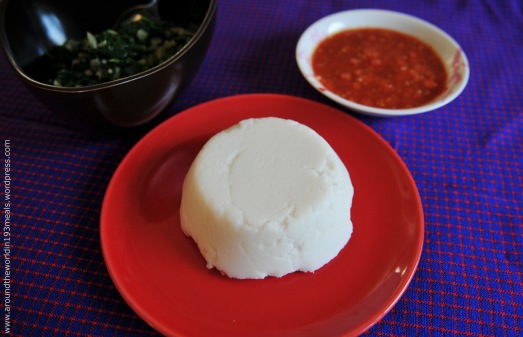 Together with the ugali we chose to make Mchicha. When we visited Burundi on this blog, we did a version of Mchicha (see here), this version is different.
Together with the ugali we chose to make Mchicha. When we visited Burundi on this blog, we did a version of Mchicha (see here), this version is different.
Ingredients
- 400 g fresh spinach (if you cannot find amaranth)
- 1 big onion
- 2 cloves of garlic
- cooking oil (you know which ones by now)
Preparation
- heat oil in a frying pan.
- sauté chopped onion and garlic until transparent.
- add spinach.
- stir occasionally for 3 minutes.
- serve hot.
No meal without a dessert, it is our golden rule. So we did a dessert as well, inspired by Tanzania. Our experience is that in Tanzania, most of the meals are closed by fresh fruits. Delicious. What we did was a chocolate mousse with some Zanzibari vanilla and with chili in it, served with whipped cream, and fresh passion fruit and mango.
Ingredients
- 200 gr dark chocolate (minimum 65 %)
- 25 gr butter
- 0.5 dl sugar
- 4 eggs
- 1 red chili fruit
- 2 fresh vanilla pods (or 2tbs vanilla sugar)
Preparation
- melt the chocolate together with the butter. Either in a bowl over hot water or in a micro oven.
- separate the yolks and the egg whites in two different bowls.
- Mix the sugar with the yolks.
- whip the whites into a hard foam.
- finely chop the chili.
- cut the vanilla pod in the middle and carefully scratch the vanilla from the sides.
- Put the vanilla and the chili together with the yolks and mix this together with the chocolate mix.
- stir until smooth.
- turn the foamy whites carefully together with the chocolate mix. You want them to mix properly but you don’t want to completely destroy the texture of the foam.
- Put into serving bowls and put in fridge for at least an hour before serving.
Despite the fact we had difficulties finding ingriedients we are quite satisfied with the result of our Tanzanian dinner: quite close to the original! 🙂 A very nice dinner, not only thanks to the lovely company, but the food was really good (even though it might not sound very festive) and it also brought back some dear memories!
The Beautiful fabrics you can see as background on the pictures are of Maasai origin.
Now is the time for some nice pics related to Tanzania. Difficult for us not to begin with the country’s Coat of arms. What do you think, maybe not the flashiest we’ve posted, but quite nice, huh?
To continue, just have a look at this lovely map of Zanzibar made by Bianca Tschaikner. We’ve found it, as many other beautiful things, on creativeroots: www.creativeroots.org/
 One can easily say that Tanzania made a great impression on us, and not only culinary. The country has also taken a special place on our fridge (don’t mind the Japanese cat in the corner) You can see on the pic a pair of postcards illustrated by Sarah Markes, that T. bought in Dar es Salaam:
One can easily say that Tanzania made a great impression on us, and not only culinary. The country has also taken a special place on our fridge (don’t mind the Japanese cat in the corner) You can see on the pic a pair of postcards illustrated by Sarah Markes, that T. bought in Dar es Salaam:
To finish this African post, a pic of a drawing L. did MAAAANY years ago, when he was a youngster: The savanna animals, gathered to say to you
HAKUNA MATATA, NO WORRIES!
😀





